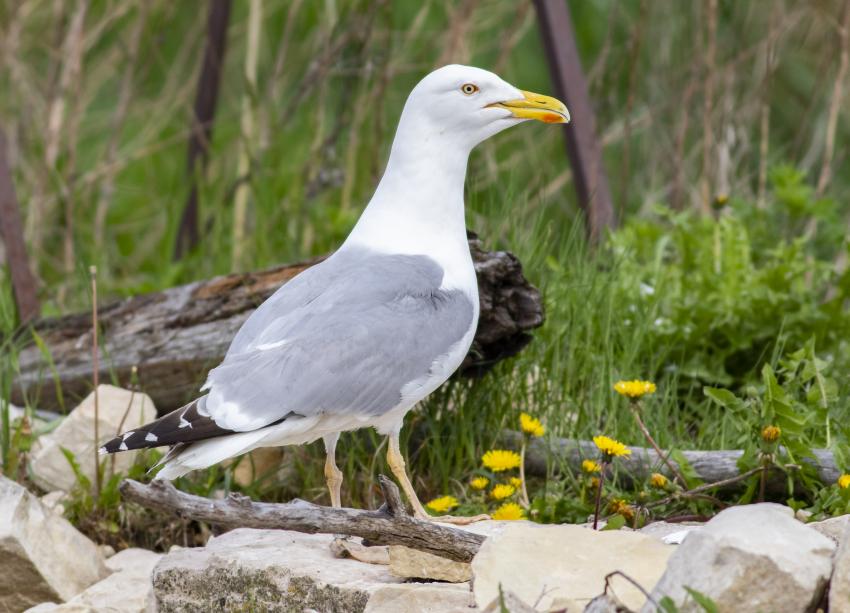An annual survey of bird nesting sites and record-keeping of nesting waterfowl is implemented at the Riga port to assess changes in their number and control the impact of the port activities on waterfowl nesting habitats. Usually, monitoring of nesting waterfowl is performed in cooperation with ornithologists of the Institute of Biology of the University of Latvia.
Bird record-keeping measures in the port of Riga are annually implemented in three territories - Milestibas Island, Kremeri, and Zhurku Island. Kremeri and Milestibas Island are protected areas, while Milestibas Island is part of the Natura 2000 nature park “Piejūra”. According to the ornithologists' report in all three territories, no negative changes in habitats related to the port's economic activity have been observed.
On Zhurku Island, located near Rīnūži, bushes were cut in 2018, significantly improving the nesting conditions of waterfowl - that is why a wide variety of birds is currently being observed here. Ornithologists have counted the nests of more than 400 birds, including herring gulls, mallards, gray ducks, terns, and oystercatchers. There is reason to believe that the number of nests will increase further when the late nesting gray ducks appear on the island. Zhurku Island is important due to its huge colony of herring gulls. Given that herring gulls actively protect their nests from various predators, ducks also prefer to nest in this place. “There is a very nice place for birds to nest here,” ornithologist Mara Janaus described the living conditions on Zhurku Island.
No significant habitat changes have been identified on Milestibas Island. In Kremeri, on the other hand, after the favorable habitat changes made in 2018, intensive coastal overgrowth is detected again, which worsens the nesting conditions of waterfowl. However, ornithologists point out that predatory mammals, which destroy birds' nests, threaten nesting waterfowl. Athreaten the quality of the environment in nature parks' territories is that deer have chosen Milestibas Island as their home shortly before the rut in July and August.
In accordance with the recommendations of ornithologists and other environmental specialists, the Freeport of Riga Authority regularly implements several measures to preserve and maintain protected habitats and other daily tasks to ensure order and environmental protection in other natural objects in the port of Riga. The green areas are regularly monitored for debris as well as excessive reed and shrubs. The Freeport of Riga Authority has also built a 12-meter-high bird-watching tower on Milestibas Island. From the top of the tower, visitors can see the island and the adjacent territories - a popular place for birds to live and nest.
 English
English























